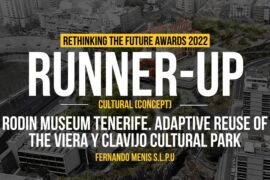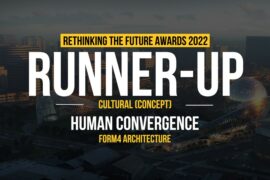1.Acquaintance with territory: There are not so much people who at least once in their life did not visit the museum. Large and small, they offer for their visitors to get acquainted with the exposition and to form an opinion about artists, sculptors, period of history or country. There are few among them who claim to absolute leadership. It is the world’s largest museums, which have a huge impact on the rest and which shape public opinion.
Kazan is located in Russia, it is the capital of Republic of Tatarstan. There is 34 state museums and several public and private galleries in Kazan.
Participant Name: Alisa Kosareva
Category: Cultural
University: Kazan State University Of Architecture and Engineering
Country: Rassia
In my opinion, the idea of the museum of contemporary art fits well into the context of the such modern fast-growing and popular city like Kazan – the city is growing by leaps and bounds, expanding fast, it introduce new technologies (for example, the construction of Innopolis near Kazan) . Futhermore, the city is a popular tourist destination not only for the Russian people, but also for European and Asian nations. All big cities have museums and exhibition spaces with a similar theme, so why not give Kazan something new and interesting, something that will refresh the look of the city?
I choose the Kirov district in the central eastern part of the city near the Kirov dam to design the museum on the free territory of the water. This area is located quite close to the heart of Kazan – the Kremlin, to which about 2.5-3 kilometers, but at the same time this district is “dead” – area is absolutely not visit residents of the city, there are no sights or large well-kept parks and embankments. So I decided to give life to this area, to grab people’s attention to the Kirov district.
2.Morphogenesis of museum: I chose the style of deconstruction for architecture of the museum Deconstructivist projects characterized by visual complexity; unexpected deliberately broken and destructive forms, and emphasized aggressive intrusion into the urban environment. Museum “bumps” into the city as well as the theme of the museum “bumps” in the Kazan society and cultural life of the city. I have served as inspiration works of D.Libeskind, Zaha Hadid and Rem Koolhaas.
Frame design: It is supposed the steel frame. Such structures are strong and durable. There are several ways to build this framework: elements are connected to each other by screws or by welding.
General plan: The chosen place has a very interesting feature – Kirov dam passes around the perimeter. It can be extremely beneficial to use – can be made a promenade with benches, landscaping at the top, and slopes – like an amphitheater, a kind of stage structure, where you can sit, relax and enjoy the light shows that are projected onto the facade.
3.Directions in contemporary art and structure of the museum
A visit to the museum begins with a passage in the volume of the building through a light tunnel. It has a complex configuration, together with light and sound installations it creates the desired mood and atmosphere for the visiting museum.
I chose the enfilade type of organization of a public building for structure of museum – interrelated spaces are located successively, one by one. This type seems to me the most successful, because its “compulsion” to go through all the spaces, it gives the opportunity to immerse in the atmosphere of the museum.
The idea of media spaces in the Museum of Modern Art came to me when I was looking for interesting content for volume and stumbled upon the MARS Center in Moscow. It is extremely unusual format for Kazan , nothing like that in the city has not yet been carried out on an regular base.
For one of the spaces with installations I propose to create structure – “bookcase” with mobile platforms. Curators will be able to use them to create individual space for exhibitions depending on the dimensions of the exhibited composition. For example, they can remove the upper platform to get great height of the ceiling or combine mobile platforms in a complex structure.
4.General plan and floor plans
5.Facades, section and view from embankment
The main idea in the concept – connection of the human and an exhibition content in the museum, their interactions, and the interaction of nature and the city with the museum’s architecture outside.
Dynamic facades – a completely new trend in the world of architecture. The manufacturing technology is the peculiarity of these facades- the basic material is a metal.
I propose using the same technology, such as on the facade of the parking in Brisbane, which is based on the idea of the natural kinetics. The facade is formed of aluminum elements, depending on the wind.
Also on the walls of the light tunnel I propose using the principles of generative graphics, where the audio and video is constantly changing code, and the replacement of one element leads to a new change, creating a flexible audiovisual organism, shape and sound by the own motions.
6.Interior
For flooring used glossy self-leveling floor. It is a seamless finish surface, it is also called liquid linoleum. For the lighting of the lobby using LED strips which embedded in the floor, walls and ceiling. To install similar lighting using aluminum profile. It can be used for decorative as well as the main illumination.
The frame of the building is metal, so gypsum board mounted on the rails. Putty aplly on the gypsum board, and then the surface is covered by a white matt paint by using spray gun.
Alisa Kosareva
Alisa Kosareva is a 5 year student of Kazan State University of Architecture and Engineering. From little up Alisa loved to draw and make something by hands. This passion has grown into favorite deal and profession. She lives in Russia in capital of Republic of Tatarstan – Kazan. This city has a lot of architectural problems and Alisa tries to solve them by various methods.[/author]






